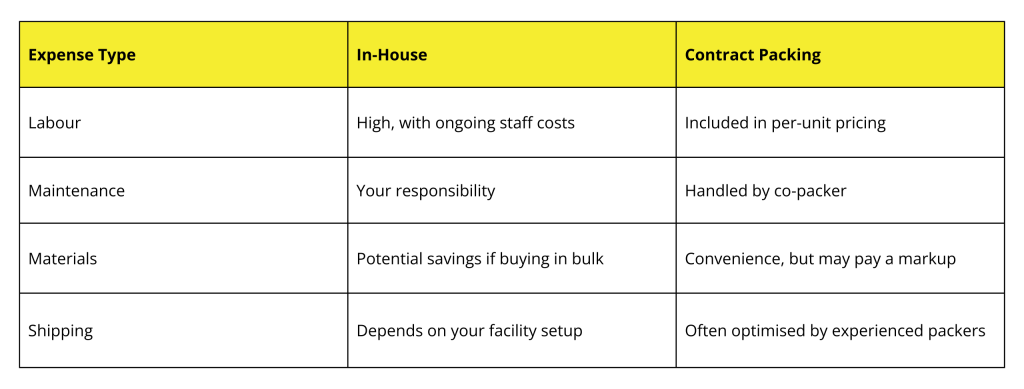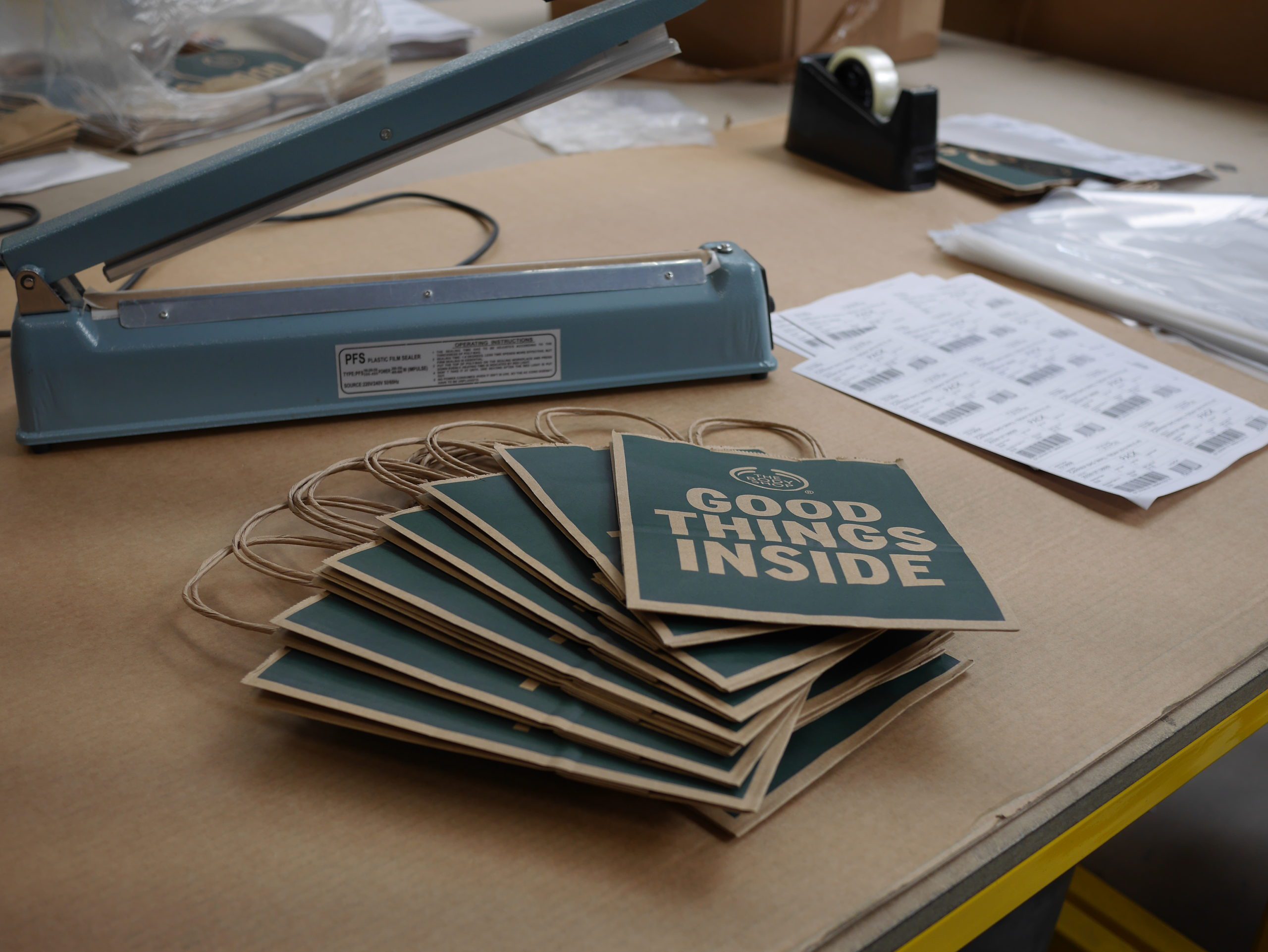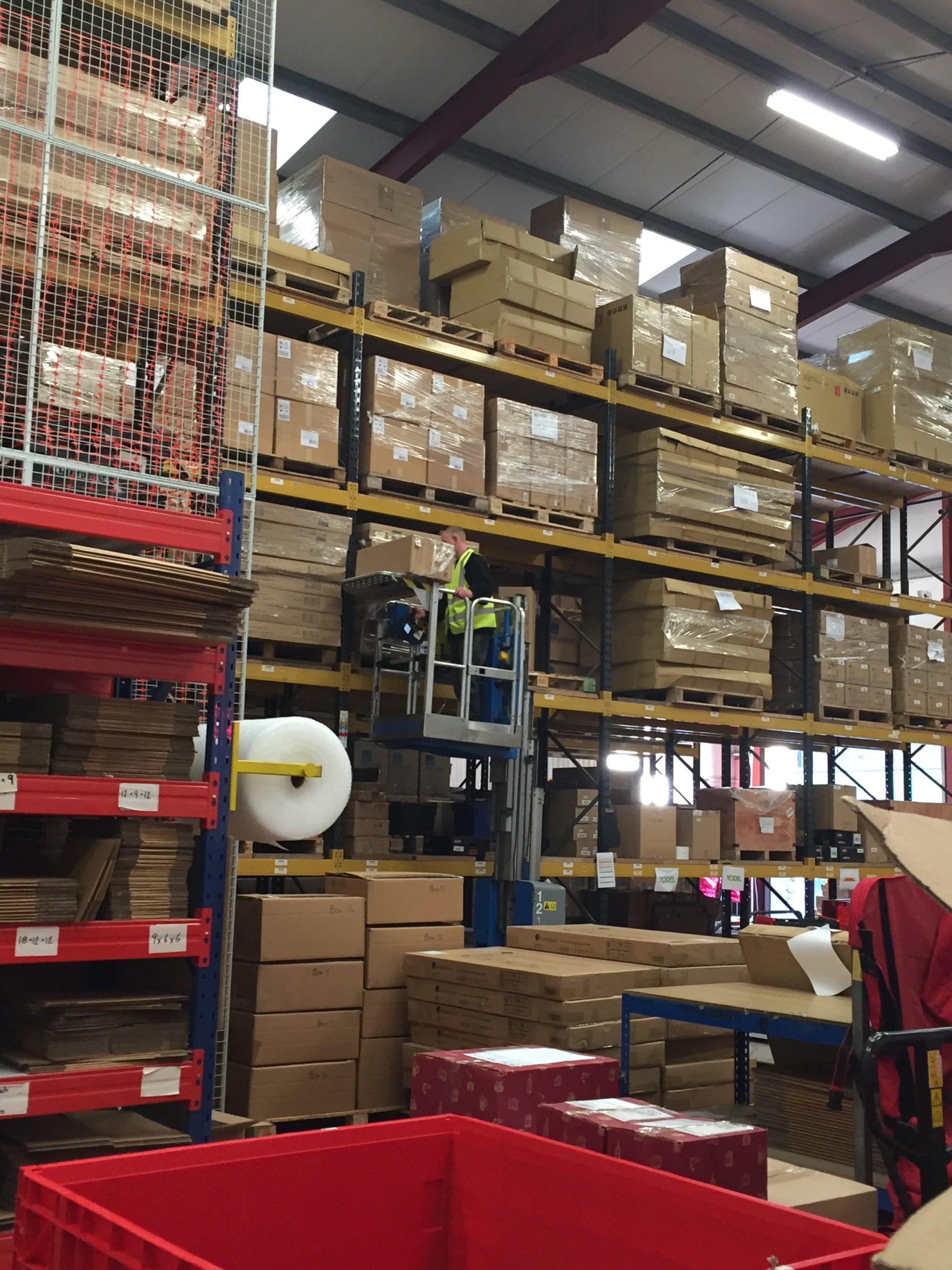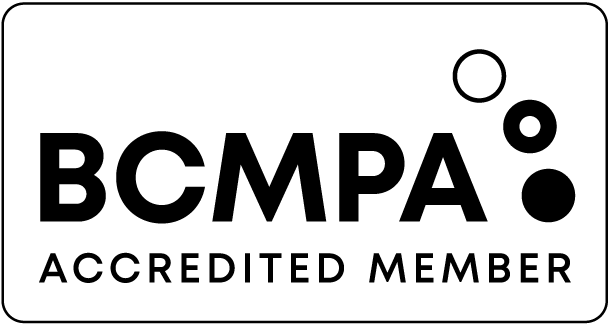
Growing E-commerce Means Bigger Decisions
As your e-commerce brand grows, you’ll hit a big decision: should you do your own packaging, or should you hire a contract packing partner to handle it for you?
Doing it yourself means more control—but it also means spending a lot up front on equipment, space, and staff. Co-packing, on the other hand, lets you outsource everything and scale faster, but there are ongoing service fees.
Both options come with costs, and both have pros and cons. Small businesses may benefit more from co-packing in the early stages. Bigger brands might save more in the long run by bringing packaging in-house.
This guide breaks it all down. We’ll show you the real costs behind both strategies—and help you figure out which is best for your stage of growth.
Before you decide which route to take, let’s explain what each one actually involves.
What Is Contract Packing?
Co-packing means you work with a third-party partner who does the packaging for you. These companies are experts. They have the equipment, the staff, and the systems to:
Co-packers usually receive your bulk goods at their facility. From there, they take care of everything—sometimes including product assembly, custom packaging, inventory control, and shipping.
This setup is great for businesses that want to move fast without spending big money on warehousing and packaging equipment. It’s also super helpful during seasonal spikes, as you can scale without worrying about hiring extra staff or expanding your warehouse.
With in-house packaging, you keep everything under your own roof. You’ll need to:
The upside? Total control over how everything is packaged and when. It’s easier to make last-minute changes, fix issues quickly, and integrate packaging into your overall production flow.
But it also means higher costs up front—especially when you’re just starting out. For brands with steady sales and enough space, in-house packaging might be more cost-effective in the long run.
Let’s break it down by key factors:
In-House Packaging = Big Upfront Spend
If you’re planning to do your own packaging, you’ll need to make some serious investments right away. The biggest costs?
All of this adds up quickly—especially if you’re still scaling and unsure how fast your business will grow.
Tip: For many small and mid-sized businesses, this cost isn’t worth it until they hit a high, steady order volume.
Co-Packing = Lower Setup Costs, But Ongoing Fees
Working with a co-packer means you don’t have to buy equipment or rent more space. You pay for what you use—and they take care of the rest. Most co-packers charge based on:
You’ll also need to sign a contract. Some co-packers require long-term agreements or have extra costs for short runs, so it’s important to review the terms carefully.
Good co-packers will be upfront with pricing and offer flexible models based on your needs.

Whether you’re outsourcing or doing it yourself, there are some hidden expenses you’ll want to budget for:
And don’t forget the opportunity cost. Every pound spent on packaging setup is money you can’t put into marketing, product development, or hiring.
Summary:
Next, we’ll compare ongoing operational costs to help you figure out which model makes the most sense for your business long term.
Labour Costs: Managing People vs. Paying Per Unit
Running your own packaging operation means you need a team. That includes hiring, training, managing, paying wages, and dealing with things like sick days or turnover. If your process is manual, you’ll need even more staff.
And don’t forget: if you’re investing in automation, skilled technicians or integrators (who know how to use and maintain equipment) come with higher wages.
On the flip side, co-packing companies already have trained teams in place. You simply pay a set price per item or order, which can often work out cheaper—especially if you’re not sending out thousands of packages a day yet.
Contract packing lets you grow without the stress of managing people.
Maintenance and Equipment Breakdown
If your machines are old, the risk (and cost) of breakdowns goes up. And the newer your products or materials, the more you might need to upgrade your equipment just to keep up.
With co-packing, you avoid all of this. The co-packer takes on the responsibility (and cost) of running and repairing the machines.
Less stress, more uptime.
In-house operations usually let you buy materials in bulk, which can mean better prices—especially once you’re moving a lot of volume.
Co-packers, however, may charge a markup on packaging materials. But many of them also have preferred suppliers and negotiated rates, which can bring the costs down.
Things to consider:
If yes, in-house might give you better margins. But if you’re growing or not yet ready to commit to buying materials in bulk, co-packing makes more sense.
Shipping is one of the biggest costs in e-commerce. In some cases, it can eat up 20–25% of your cost per order.
If your contract packer is close to your customer base or distribution hub, you can save a lot on transport. Plus, most co-packers know how to optimise packaging so you can ship more in less space—saving you money on dimensional weight charges.
Bad packaging design? You’ll pay more for every shipment.
Good packaging design? You’ll fit more in each van, lorry, or container—and reduce returns too.
Efficient packaging = better margins and happier customers.
Let’s Recap

Both options have pros and cons, but the best choice depends on how fast you’re growing and how much control you want.
Choosing between co-packing and in-house packaging isn’t black and white. Each option has its pros and cons—and the right choice depends on your business size, goals, and how fast you plan to grow.
At Bray Solutions, we offer contract packing services designed for e-commerce brands who want reliable, cost-effective, and scalable fulfilment. Whether you’re shipping 500 or 50,000 units a month, we’ve got the expertise, tech, and team to handle it.







We integrate with a number of different systems.
Get in touch to find out how we can help.